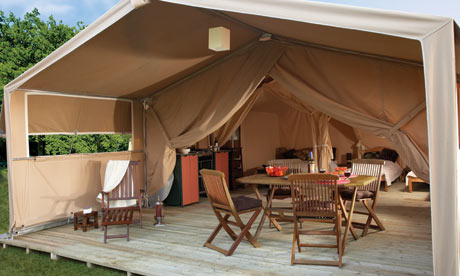
best large camping tents image

Anita
I am planning my first winter camping and I need to purchase a winter camping tent. What should I consider when buying it?
Answer
Freestanding
Choose a freestanding or dome tent that needs few or no ropes or tent stakes for support. Tent stakes are easily lost, and staking out a tent in the snow can be difficult. A freestanding tent allows you to be flexible with location while still feeling secure in the tentâs structure. Keep in mind, however, that a freestanding tent is easily tossed in windy conditions but can be weighted down with gear on the inside or rocks on the outside.
Support
Four-season tents are designed with snow load in mind and have sturdy, strong support poles. Avoid tents with large, unsupported, low-angled areas that can accumulate snow and possibly cause the tent to collapse.
Size
Choose a tent that's rated for one more person than will actually be using the tent. The additional space will come in handy for bulkier cold-weather sleeping bags and extra winter gear. In addition, harsh weather can force campers indoors more often in the winter, and the extra space can help campers pass the time more comfortably. Furthermore, you may want to consider a tent with a vestibule area where you can leave snow-covered boots or cook inside when necessary.
Freestanding
Choose a freestanding or dome tent that needs few or no ropes or tent stakes for support. Tent stakes are easily lost, and staking out a tent in the snow can be difficult. A freestanding tent allows you to be flexible with location while still feeling secure in the tentâs structure. Keep in mind, however, that a freestanding tent is easily tossed in windy conditions but can be weighted down with gear on the inside or rocks on the outside.
Support
Four-season tents are designed with snow load in mind and have sturdy, strong support poles. Avoid tents with large, unsupported, low-angled areas that can accumulate snow and possibly cause the tent to collapse.
Size
Choose a tent that's rated for one more person than will actually be using the tent. The additional space will come in handy for bulkier cold-weather sleeping bags and extra winter gear. In addition, harsh weather can force campers indoors more often in the winter, and the extra space can help campers pass the time more comfortably. Furthermore, you may want to consider a tent with a vestibule area where you can leave snow-covered boots or cook inside when necessary.
How to repair a canvas camping tent?

Ivy
I noticed there is a tear in my canvas camping tent. Can it be fixed? How to do that?
Answer
1. Sew the sides of the damaged area together. This is similar to sewing clothing, except that thick canvas may require a large needle or awl and heavy duty or waxed string. These materials are available at outdoor specialty stores.
2. Spread seam sealer or beeswax to the sewn seam. This product is available at outdoor and camping specialty stores, and can vary depending on the make of your tent (canvas or nylon). Follow all product instructions and warnings for proper application details, including drying time.
3. Line up one of the patches so that it is centered with the inside area of the tear. The patch should be larger than the damaged area on all sides by at least 2 inches. Secure the patch with glue, which can also vary depending on the make of your tent. Follow product instructions for drying time; be sure the adhesive is completely dry before continuing.
4. Sew the patch into place to fully secure it. Using adhesive and stitches will help prevent the tear from spreading or from opening again.
5. Spread seam sealer or wax over the sewn seams and the edges of the patch for optimal protection.
6. Line up, glue and sew the other patch to the outside of the tear. Be sure that it lines up with the inner patch, as the two should be the same size. Apply sealer or wax to the seams and the edges of the patch.
Or you can purchase a new camping tent on http://www.quictents.co.uk.
1. Sew the sides of the damaged area together. This is similar to sewing clothing, except that thick canvas may require a large needle or awl and heavy duty or waxed string. These materials are available at outdoor specialty stores.
2. Spread seam sealer or beeswax to the sewn seam. This product is available at outdoor and camping specialty stores, and can vary depending on the make of your tent (canvas or nylon). Follow all product instructions and warnings for proper application details, including drying time.
3. Line up one of the patches so that it is centered with the inside area of the tear. The patch should be larger than the damaged area on all sides by at least 2 inches. Secure the patch with glue, which can also vary depending on the make of your tent. Follow product instructions for drying time; be sure the adhesive is completely dry before continuing.
4. Sew the patch into place to fully secure it. Using adhesive and stitches will help prevent the tear from spreading or from opening again.
5. Spread seam sealer or wax over the sewn seams and the edges of the patch for optimal protection.
6. Line up, glue and sew the other patch to the outside of the tear. Be sure that it lines up with the inner patch, as the two should be the same size. Apply sealer or wax to the seams and the edges of the patch.
Or you can purchase a new camping tent on http://www.quictents.co.uk.
Powered by Yahoo! Answers

No comments:
Post a Comment